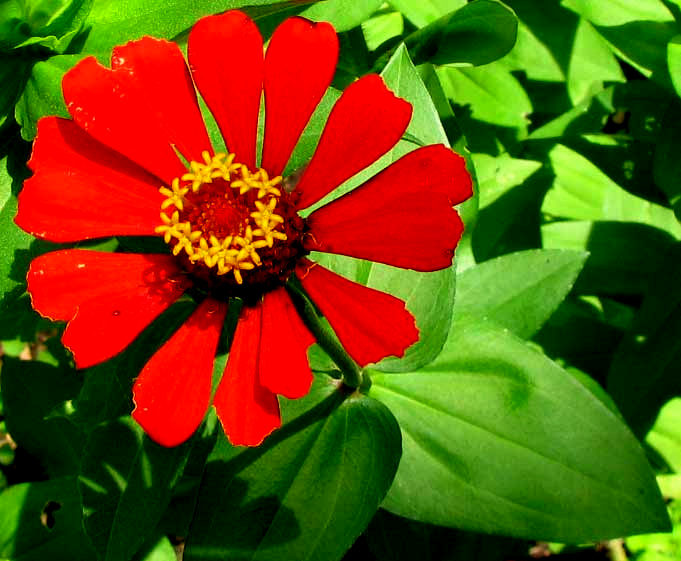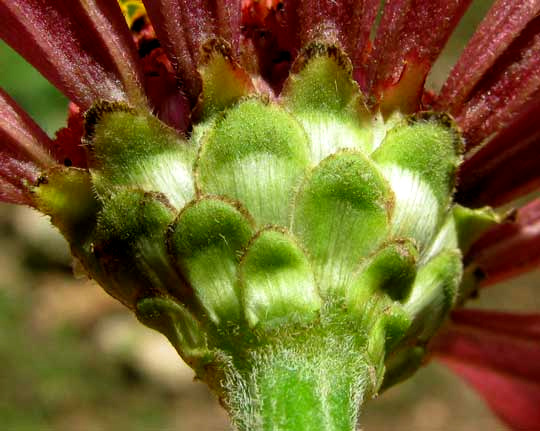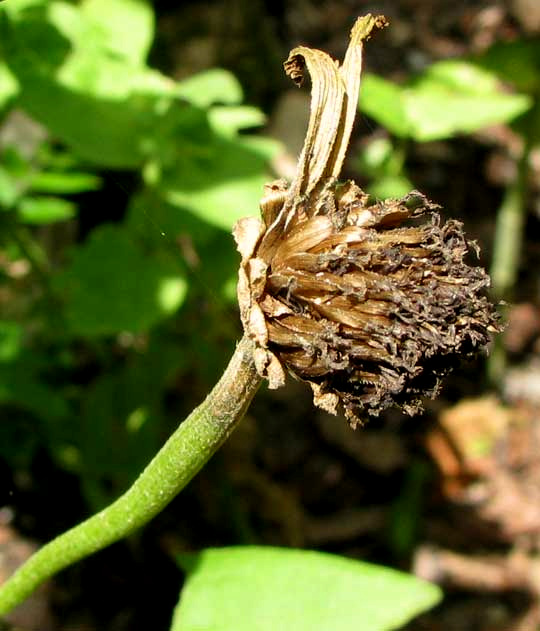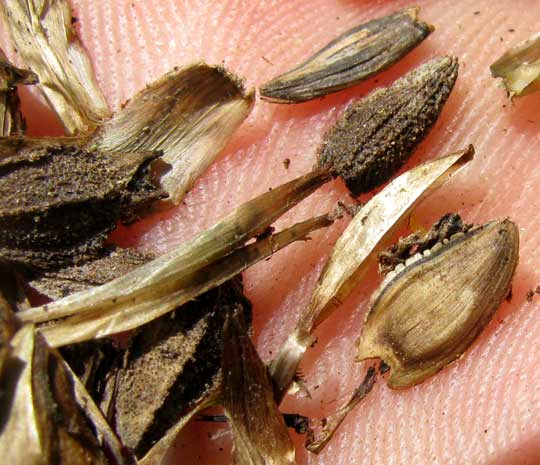Excerpts from Jim Conrad's
Naturalist Newsletter

from the August 29, 2010 Newsletter issued from Hacienda Chichen Resort beside Chichén Itzá Ruins, central Yucatán, MÉXICO; limestone bedrock, elevation ~39m (~128ft), ~N20.676°, ~W88.569°
ZINNIAS BY THE HUT
Often I sit just outside the hut door reading, watching the critters, or just looking around. Each day it's more pleasant there because my springtime plantings are producing a gardeny feeling.
Above you can see my chair with strawberry-red-flowered zinnias in the foreground, a tuft of lemongrass just beyond them, some basil beyond that, then just beyond the chair and walkingstick is the big clump of marigolds in which the iguana perches each morning.
The zinnias -- these are Common Zinnias, ZINNIA ELEGANS -- are reaching their blooming peak about now. A very red flowerhead three inches across (7.5 cm), with opposite, stemless leaves arising below is below:

I say flowerhead instead of flower since zinnias are members of the Composite or Sunflower Family, so what's shown in the last image is a head consisting of many packed-together, tiny flowers. If you need to be refreshed on what composite flowers are like, check out www.backyardnature.net/fl_comps.htm.
Now look at the medial section of a zinnia head shown below:

At the top, right corner of that picture what looks like a golden, upside-down starfish is one of the head's many disk flowers -- the five starfish arms being five corolla lobes. Follow the corolla tube down from the starfish and you'll see that a long, slender thing shaped a little like a shoehorn partly wraps around the corolla tube's base. That's a bract, or modified leaf, separating each flower from the other. Many kinds of Composite Family flower heads have no bracts, so their presence here is a feature helping us know that this as a zinnia. The fact that the bracts' crimson tops have jagged margins also is notable because the genus Zinnia embraces 20 or so species, and the jagged margins help distinguish our species elegans.
Another feature of zinnias is that their " involucral bracts" are rounded instead of having the more common sharp points, plus they overlap one another in several series instead of standing side-by-side as in many genera. You can see the zinnias' involucral bracts below:

Some of our zinnias' flowers are long past their glory, as you can see in the dried, brown bulk shown below:

I've been picking these heads and saving "seeds" from them, some of which lie in the palm of my hand below:

The best-formed and probably the only fertile "seed" in that image is the one at the bottom, right. Immediately above it, the scoop-shaped thing is a dried involucral bract. I put quotation marks around seed because the "seed" is actually a special dry, one-seeded fruit typical of the Composite Family, known as an achene.
Common Zinnias are native to Mexico, but not to the Yucatán. They're so loved by gardeners worldwide that many forms have been developed. There are zinnias with white, cream, green, yellow, apricot, orange, red, bronze, crimson, purple, and lilac flowers, those with striped, speckled and bicolored blossoms, there are zinnias with double, semi-double and dahlia-like "pompon" heads, and zinnia forms that range from dwarfs not exceeding 6 inches tall (15 cm) to those well over a yard tall (1 m), like mine.